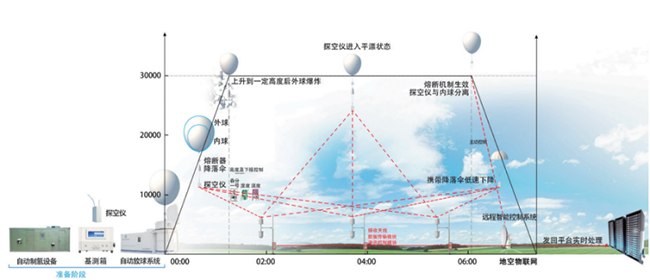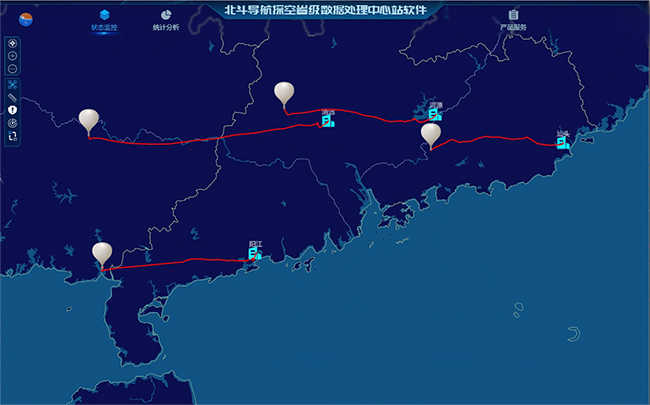
Updated: 04-09-2023
Source: China Meteorological News Press
At 3:30 am on September 2, the 9th typhoon SAOLA in 2023 made landfall on the southern coastal areas of Zhuhai, Guangdong. On August 31, CMA Meteorological Observation Centre (CMA MOC) with CMA Center for Earth System Modeling and Prediction (CMEC) and Guangdong Provincial Meteorological Service applied RDSS to monitor SAOLA. This is the first time CMA carried out the round-trip drifting, which realized the interaction of typhoon observation and forecast, and effectively enhanced the accuracy of monitoring and forecasting of SAOLA since the upgrading from L-band radar sounding to Beidou Navigation Sounding System was activated in July this year.

Diagram of Round-trip Drifting
At 7:00 p.m. on August 31, four national upper-air meteorological observatories in Qingyuan, Heyuan, Shantou and Yangjiang of Guangdong carried out intensive observation by harnessing RDSS, and successfully acquired observation factors like temperature, air pressure, humidity, and wind during the three stages of ascending-drifting-descending.
According to ZHANG Lin, a professor-level senior engineer from CMA CMEC, the data gathered during intensive observation based on RDSS has been remarkably effective in the assimilation application of CMA-GFS. Based on assimilated data, numerical weather prediction displayed that typhoon track of SAOLA was more northerly and featured stronger intensity and tended to make landfall, and the wind and rain incurred by SAOLA would be stronger in offshore regions.

The track of RDSS at 8:00 p.m. on September 2, 2023 Credit: CMA MOC
As of 7:00 a.m. on September 2, four national upper-air meteorological observatories mentioned above have released sounding balloon 24 times, obtained 48 sets of vertical profile data during ascending and descending stages and 24 sets of round-trip drifting data, with the spatial coverage of one single observatory extending 100 km to about 400 km. Based on the original L-band sounding, the vertical observation data has been substantially enriched, and the observation effect of intensive sounding has been fully manifested.

Track of RDSS at 7:00 a.m. on September 1, 2023 Credit: CMA MOC
Since 2017, CMA has spearheaded the R&D of the Beidou Navigation Sounding System, and upgraded to obtaining data of all three stages of ascending-drifting-descending by releasing only one balloon-sounding system.
Since August 2022, CMA has initiated the pilot operation of Beidou Navigation Sounding System network observation in Guangdong, actualized the encryption of operational sounding data, and effectually monitored the evolution of severe weather systems, convection conditions and typhoon structure. During the trial run, after CMEC assimilated Beidou Navigation sounding observation data, forecast error of minimum air pressure at the typhoon center, and that of maximum wind intensity in track forecast of the 9th typhoon Ma-on in 2022 were reduced by 1% and 5.2% respectively.
Editor: LIU Shuqiao


















